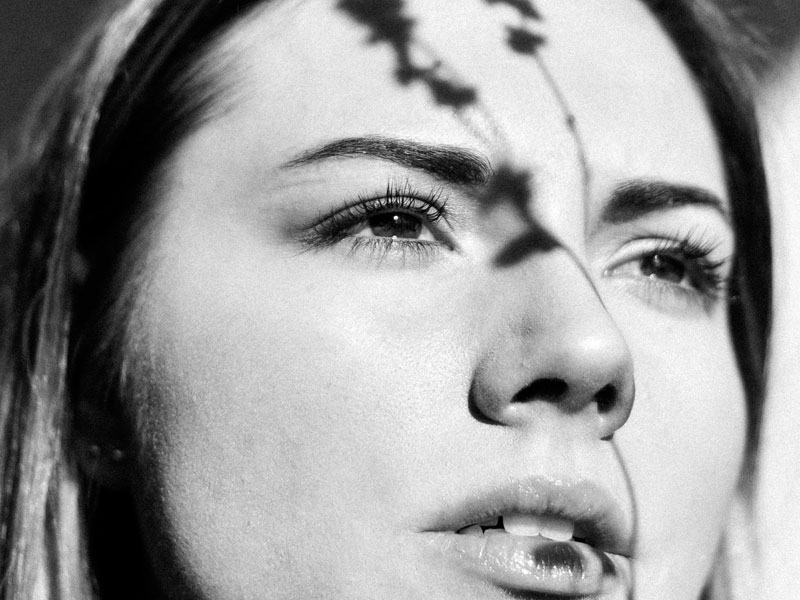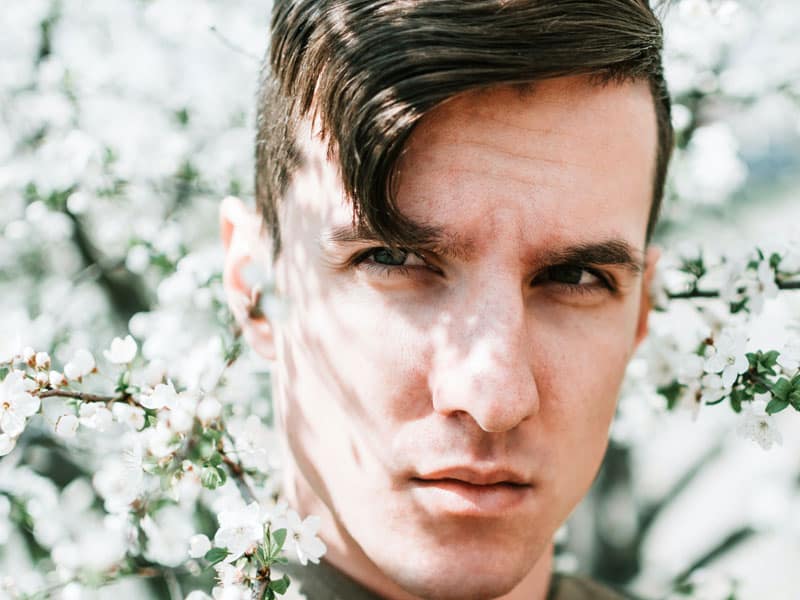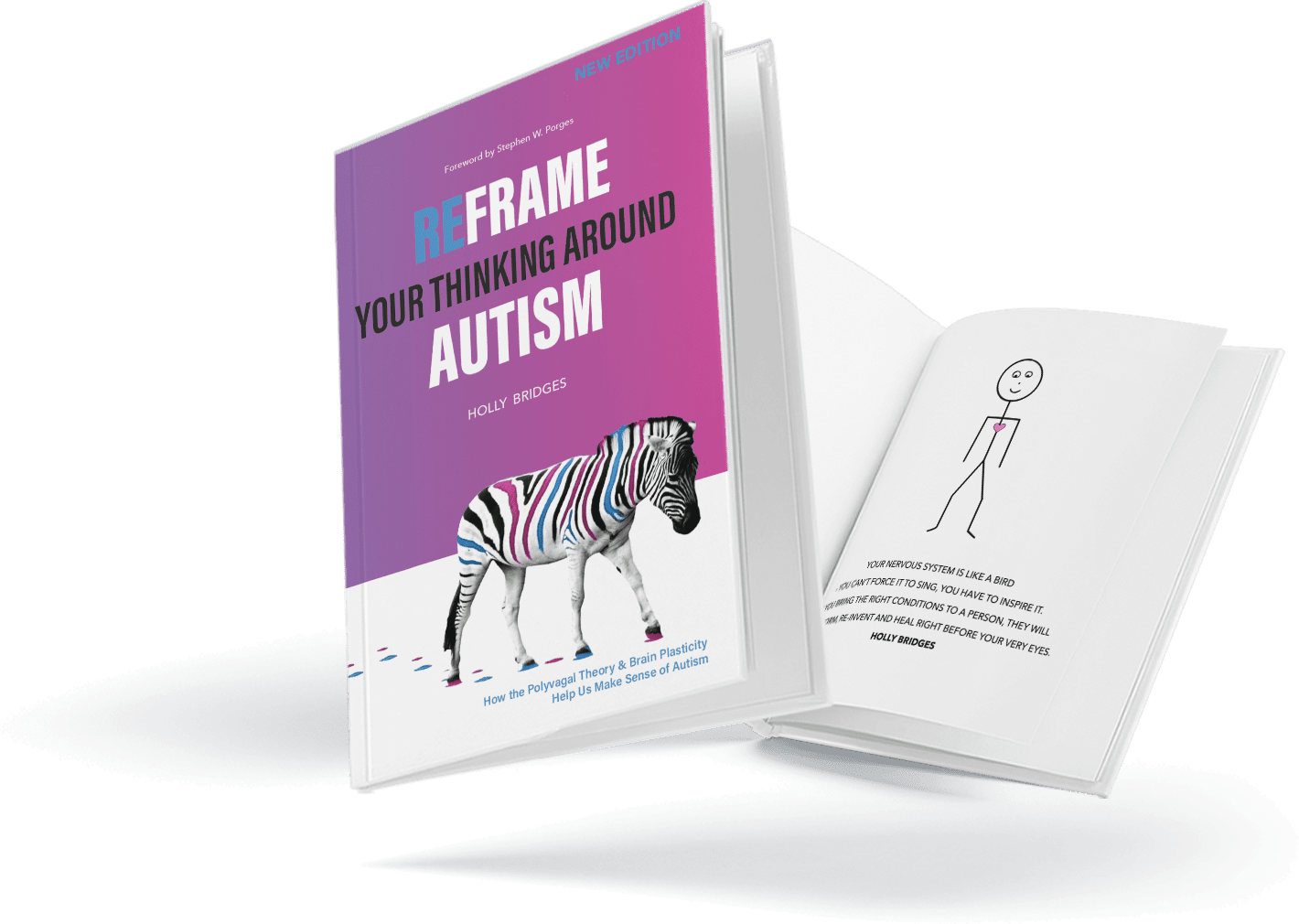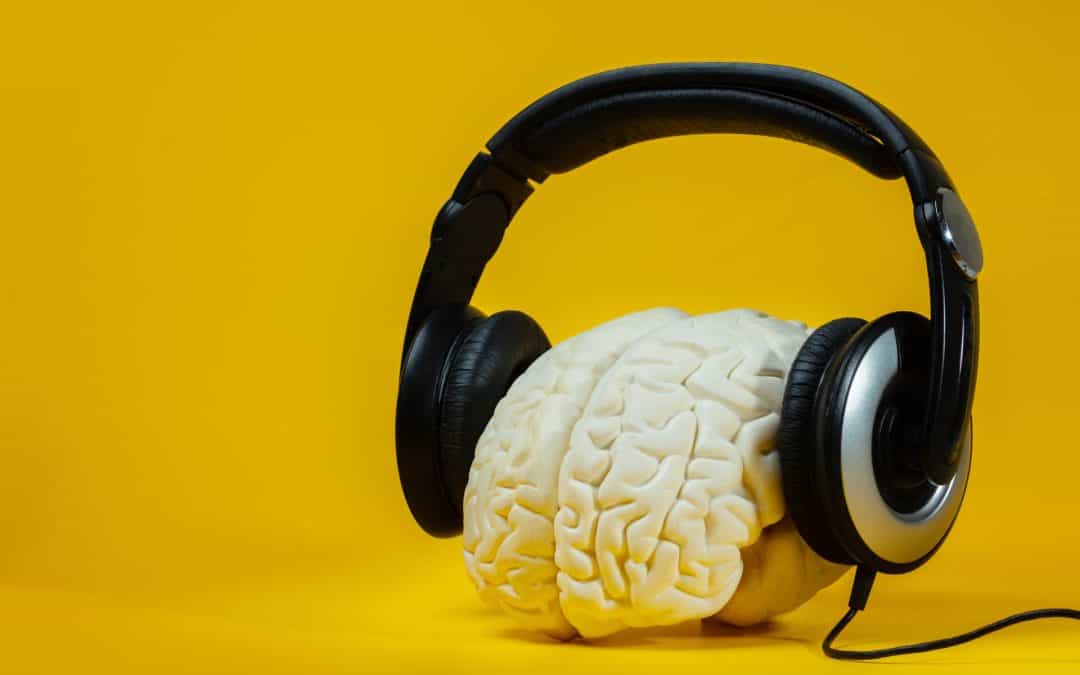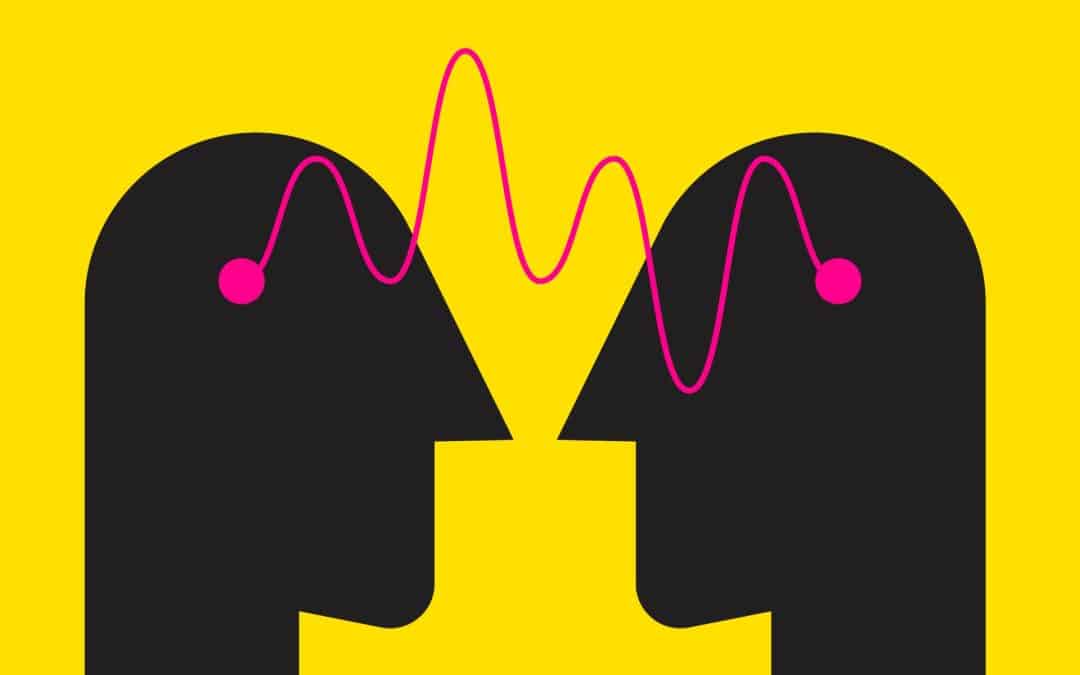So much of our focus on the Polyvagal Theory centres around honouring and validating the ventral vagus and teaching people to move up from the dorsal states and into the light of the ventral states.
According to the polyvagal theory the ventral vagus – the second branch of the parasympathetic nervous system and our newest evolutionary function – supports our capacity to have healthy relationships, it regulates our physiology, it is the place from which we keep ourselves safe and connected through socially engaged behaviour. Being socially connected, being able to articulate our thoughts, to make eye contact, to be awake and open to other people and experiences are hugely important for our survival. Our modern world has been perfecting these skills for over three thousand years and it no wonder we prize them as highly as we do. We have surpassed the beasts! We are the top of the food chain. We are intellectual, we can dominate our lower processes. We have control and we value those who have control.
The dorsal vagus is the first branch of the parasympathetic nervous system and is part of our ancient biology. In high activation it is responsible for our involuntary shut-down response – we freeze, faint, fold, feign or fragment. In low activation it allows us to engage in activities that are essential for the organism – digesting, producing stores of nutrients and substances vital to our continued health such as myelin, dopamine and serotonin. It is here that we sleep and dream, it is here our brain can action neural pruning and make sense of the day; it is where we nurse our babies and where we share healthy sexual intimacy. The dorsal state is seen as ‘rest and digest’ but it is so much more. It is a deeply alive place that is not as apparent to the naked eye.
When we move through the dorsal states, we can share time with people (and ourselves) on a deeper level. It is here where we spend time relaxing and drinking wine with our friends; it is here we meditate and spend time with our faith. Our bodies literally need to be in the right physiological mode in order for us to engage with this kind of play. We can use drugs and alcohol to take us there and we can train our mind-body through physical and mental practices to develop the skills to gain access to our inner world or higher states.
A worrying trend in the upcoming world of therapy based on the Polyvagal Theory is the emphasis on the superiority of the ventral vagal states. Like we do in the real world, we consciously and unconsciously give higher value to the ability to be able to smile; to smooth things over; to articulate our thoughts with clarity; to use soft eye contact to soothe and engage those around us. If we or our client cannot do this, it is assumed that we need to get them back into the mode where they can have this ability, this control, this self-mastery. It can seem a worthy goal and the quicker the better. Let’s all hack that vagal nerve and get back to work!
We feel safe when the social system, via the ventral vagus, is in play. People are easy to read, they don’t trigger our flight/fight system, and we can more easily get what we want; people like us more. So, we idealise this capacity and rightly so. It is our highest evolutionary function; it sets us apart from the beasts! But what are we missing when we all too often veer our therapeutic approach towards this end? Who are we serving and are we serving them well with our all too good intentions? Are we of any use to our autistic clients coming from this unquestioned psychological sanctuary?
In our therapeutic approach we psychologists and therapists all too often over prioritise the ventral vagal states (our capacity to socially engage). It’s not surprising since some of our best-known models for the PVT are ladders with the ventral states at the top that can only imply superiority of this function. We are encouraged to ‘climb the ladder’ up and out of the dorsal states, up into the lightness of the social engagement system! We honour the people who have met this challenge well, they are a success story for us as therapists and we also see ourselves as successful when we render our capacity to be just so.
Current neuroscience is allowing us to perceive the reality of these fluid brain states and make sense of why initiation rituals were undertaken at these times; but we have long forgotten the tradition and history of engaging in this type of activity. For the modern world, the higher order dorsal states have become quite unreal, something silly or superstitious. To quote the British Commander in the movie ‘Pirates of the Caribbean: ‘the immaterial is immaterial’!
This all gets tricky when we start working with people on the autism spectrum. People on the spectrum often don’t easily inhabit the world of the ventral vagus. It can be exhausting to be ‘on’ all the time, to make eye contact, engage your speech in a way that is socially acceptable. Often utilising executive functioning skills takes a lot of work and for some, these abilities are often or always out of reach. We tend to infer from this that these people are a little under par. We have a desire to ‘fix’ them or, since we can’t, we help them to manage themselves as best they can in our material world. Our emphasis on safety and survival means that we can’t see how they can be fully rounded, intelligent human beings because they just haven’t got what it takes. We can love them, assist them, be proud of our desire to stand up for disability rights, but we still feel sorry for them because they can’t do what we can do. And they know it.
The million-dollar question is – what if we are looking at this the wrong way around? What if, because we have lost the ancient language of the dorsal states, we miss the vitality and vast intelligence that is staring us in the face? What if, and not in a paternalistic way, there was something autistics had to teach us? Something that we have long forgotten? Maybe, like diligent Buddhists, when people spend their days deep in the bowels of the dorsal state, when they are continually in an unsocialised mind state – they are not doing nothing, they are inhabiting a whole other world? When you are in an immobilised state you have access to and are informed by thoughts and dreams, complex ideas and connections that defy the pathology label autism (and I would argue intellectual disability) has been given. You might not be able to share it, but in this place, you are privy to an indescribable vastness of mind.
People on the spectrum excel at auditory and visual tasks, they are often faster at visual thinking and pattern recognition. Some see a much wider spectrum of colours than is available to the average mind. Many can feel and know colours in a way that the ordinary mind cannot. There can be an intense sensitivity that informs as much as it is hard to handle in the material world. A young woman with intellectual disability I work with can hear the plants when they open in Spring. It took her mum ages to work out what she was doing every year standing stock sill in the garden– till she asked and was told in no uncertain terms what was happening!
All manner of beauty on our world – art, science, construction, architecture, medical frontiers- have been informed by the autistic mind when the person has had the resources to unleash the beauty stored within. This heightened capacity may have developed due to the brain being forged in a constricted internal system, or it may be another evolutionary upgrade. It’s a little chicken and egg and we may never know, but it’s present and true and it allows a presence, an intelligence that people who have not lived this way cannot readily access, nor often understand. They see it as odd, other; they can be impatient not knowing how to sit and wait and make the right spaces and open inquiry that allow the magic to unfold. Mostly, our therapists have been taught to use modern techniques that have little meaning in the fluid, dorsal world. They have been taught to bring this keen mind back into the land of the two dimensional, not knowing how to appreciate the three (or four) dimensional. Because of this, often our autism therapies don’t begin to touch the sides.
I also know what it was to find the Polyvagal Theory and what it meant to me to be able to explain all this at scientific level and how it has allowed me to better care for myself and now to care for other people. I have watched so many people experience a life change, families and participants, just by appreciating this knowledge, and I know what it affords a 13-year-old young woman or a 20-year-old young man to know that it is their physical system, then executive system that drops out and that it is not about their innate intelligence.
These people are more than bright. When they feel safe and well met, they are stunning in all sorts of ways and mostly because they exist in a realm of deep empathy and compassion. They see through eyes that have not been as inculcated with an egoic state, they see far and wide. Yes, they do have trouble with working memory, it goes offline with your executive functioning under duress. Yes they do have trouble holding their temper and self-regulating to a greater or lesser degree, but what I am finding – through a simple loyalty to the basic truth of the Polyvagal Theory – is that if you can find a way to teach the physical system how to know more than just the deep state; you change the game.
You can’t do this from a top down oriented therapy. We are teaching the system something new, something it hasn’t known before. It’s not an intellectual exercise to bring the body to a new stasis. The usual mental strategies and breathing techniques have only a little value here. They work on the assumption that the body pre-appreciates this state and can move toward it. You can’t imagine yourself into if you’ve never been there. It’s not possible for a system that hasn’t felt this before to know where it’s going. You have to teach it that it’s true, experientially.
You can’t do this work if you think the ventral states are the best and you are working from an assumption that you are trying to get people back up to scratch. You can’t do it with a vagus nerve ‘hack’ mindset and a wish for a toolbox of tricks to apply on your client to get them into ship shape! You can’t do it if you do not genuinely think there is nothing to fix. These are all orientations I see from teachers and therapists I see in my workshops and I have to gently, slowly show them something they don’t know. That we are working with deep space. That we are working with a timeless, vast intelligence alongside a very narrow capacity to know and regulate a very trigger-happy flight/fight system – that won’t relax or be compliant just because you want it to, but will the minute we get it right. Always we are working in a glorious mass of contradictions. We are steeped in chaos theory, but underpinned by a very basic and sound appreciation of the polyvagal theory. We hold onto that and let all the rest go.
To dive into the deep, to let someone in to your private, sacred space you have to feel safe, you have to give permission. We know this with typical clients but it is amazing how this gets lost when we are working with people with a different operating system. We can help people to feel safe by sharing the ideas of the Polyvagal Theory in ways that are individually meaningful. If students (clients) get a straight-forward, age-appropriate, intellectual choice to participate rather than a pretty coercion by using the social-engagement skills of the therapist to get them to relax and comply, then they can be truly present to the process. If we are always transparent; always clear on our intentions and we show that the client always has final say over what happens in the session, we get farther quicker. If we give room for them to have disdain for the process; to think what they want and to be open to the possibility that they might learn something new if they engage; if we teach them we are willing to be patient and creative to allow this to happen; if they have a right to say no -then we have set up some of the conditions necessary to play in the deep end.
It is all highly creative; it is all highly individual. It rests on a fluidity, an ability to work without a script, an ability to trust in a process that might make no sense and might not even work. It relies on the therapist not being in command, but a Sherpa, a guide. One with knowledge but not all the knowledge, because the one you are with might know/do/think/be, more that you can ever imagine. If they are given some space inside to breathe and some consideration for their considerable intelligence great things can happen.
What happens, when we get it right, is that the student sees more, feels more. The mind starts to clear, they start to have an experience of themselves from a new perspective. Instead of intellectually trying to develop a new vision of self for our client, one that they can cling to, to pull themselves out of the mud; instead we alleviate the body and see a new protagonist emerge. Usually this new person is like Excalibur! Drawing the sword deep from bound stone, we see emerge a new energy, a new potency that enhances the figure, our student, who knew but didn’t know his destiny, who knew but couldn’t find the power to drive her life. We open the possibility for power to emerge, long locked inside a highly immobilised or highly driven yet switched off system. We find the key.
Yes, we are moving them into ventral states. It is the right for every human being to have the full range of human capacity to use the body where and when you can. What we are mindful of – at all times – is that we are not working to the expense of the dorsal. It informs us at every turn. It guides us and much as we guide it. When we are finished our journey, we have perhaps loosened its shackles, but we don’t ever eradicate the dorsal in favour of the ventral state. The dorsal is a friend, an ally. It keeps us safe and moves us in ways that are faster and braver than we can ever consciously think. It replenishes us, it is where we know ourselves deeply. It is where we engage with the sky, the earth, the trees, the water, the land. All the things we humans know we need to re-engage with, deeply and profoundly if we are to save this planet we love to live on. All this connection to more than the individual self, comes from the deep, dark, sacred dorsal space that the autistic mind knows so well.
The Ancient Greeks used to say their best years were behind them. As if they knew that there were competencies that had been lost in the growth of modern civilisation. In neuroplasticity when the brain is growing something new, it will subdue some capacities for a time, then bring them back into view. Perhaps the remarkable numbers of autism being counted today are witness to an awakening of an old timeless skill that we have long forgotten, and long forgotten to treasure?
*1 www.shiatsuman.com

